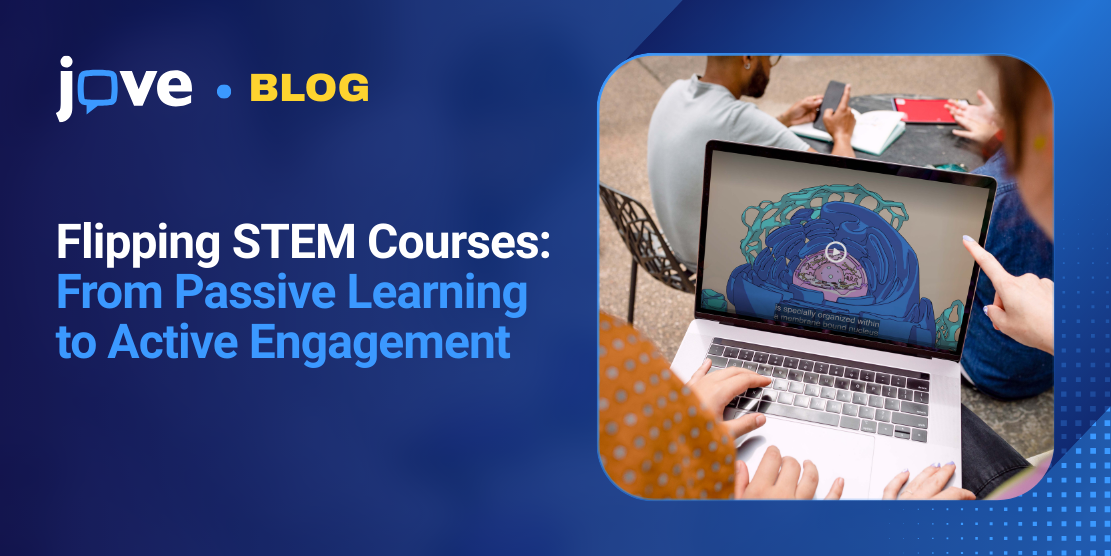In my first year of undergrad, science classes often meant being in a lecture hall with three or four hundred other students. Unlucky latecomers sat on the floor or on the stairs between the rows of seats. The pace was usually non-stop, with dense slides rushing by as the professor tried to cover everything in under an hour. There wasn’t much time to pause or ask questions. Labs were not much easier: overcrowded benches, a ticking clock, and everyone trying to catch up at once.
In this intense environment, not everyone started on equal footing. Some classmates had already seen the material in high school, while others were encountering it for the first time. This uneven preparation meant some students got lost in the details while others were ready to move ahead.
That is where a flipped classroom can make a difference. Instead of trying to absorb everything during a fast lecture, students prepare in advance at their own pace with the core material. Class and lab time can then be used for what is usually missing in those large first-year courses: space to think, ask questions, and really engage with the topic alongside peers and instructors.
Traditional vs. Flipped: A Simple Comparison
|
Standard Module |
Flipped Module |
|
Core content delivered in lecture; students take notes passively. |
Core content delivered before class via short videos or readings. |
|
Students encounter new concepts for the first time in class. |
Students preview concepts at their own pace (pause, replay, review). |
|
Class time mostly used for explanation and coverage. |
Class time mostly used for discussion, group work, and application. |
|
Labs consumed by setup and basic instruction. |
Labs focus on analysis and higher-order skills. |
|
Student interaction limited to Q&A at the end. |
Active engagement throughout (debate, peer instruction, collaborative problem solving). |
Evidence Snapshot: What Studies Show
Research across STEM fields highlights consistent benefits of flipped approaches:
Why Videos Fit Naturally into the Flip
Not all pre-class materials are equally effective. Videos are well-suited because they are visually engaging, repeatable, and concise. Students can pause and replay as needed, which is especially helpful for complex or invisible processes in STEM.
Let’s look at practical examples for three subjects:
- In physics, a video on projectile motion shows how trajectories follow predictable equations. Students can watch it before class, then use class time to run experiments with sensors, test predictions, and compare theory with real data.
- In anatomy, a video textbook chapter on blood vessels and circulation gives students a clear picture of how arteries and veins connect. By previewing videos before class, they arrive with a mental map already in place, leaving time for hands-on modeling or case-based discussions.
- In biology, a video on sample imaging introduces students to microscopy techniques and molecular structures ahead of time. Instead of using class to cover basics, instructors can focus on interpreting images, comparing healthy and diseased tissue, or evaluating staining methods.
These exercises illustrate how videos prepare learners and create space for active engagement once they arrive in class.
Listen to how Dr. Lindsay Parker effectively implemented a flipped approach for her labs using videos:
Challenges, Myths & Ways Forward
Solution: When videos are short and paired with low-stakes quizzes, preparation rates rise. Research shows that videos with embedded questions improve learning.5
Solution: Flipping does not require a complete overhaul. Many instructors start with one lecture or lab to test the approach and adapt gradually.
Reality: Flipped learning has been shown to work even in very large lecture courses. In introductory biology and chemistry classes with hundreds of students, structured pre-class assignments and active in-class problem-solving led to higher exam scores and improved retention, particularly for underrepresented students.4,6
Reality: With embedded questions, prompts, or reflections, videos become interactive tools that prepare students for deeper work in class.7
Practical Starting Points
Faculty interested in trying a flipped approach do not need to redesign an entire course at once. A practical way to begin is by selecting one topic that students often find challenging, assigning a short video for pre-class preparation, and adding a few simple questions to check understanding. Class time can then be used for problem-solving or discussion rather than repeating content, and quick feedback will help guide whether to expand this approach further.
By experimenting step by step, faculty can create classrooms where students arrive prepared, participate actively, and leave with stronger understanding.
For more practical insights, join our upcoming webinar,
Flipping the Science Classroom: Engaging Students Beyond Lectures.
- Santos, A. M., & Costa, L. (2021). Flipping Linear Algebra using a MOOC platform (arXiv preprint arXiv:2103.11810). https://arxiv.org/abs/2103.11810
- McLean, S., Attardi, S. M., Faden, L., & Goldszmidt, M. (2016). Flipped classrooms in health professions education: A review of the evidence across disciplines. Medical Education, 50(9), 943–952. https://doi.org/10.1111/medu.12916
- Kishimoto, C. T., Anderson, M. G., & Salamon, J. P. (2018). Flipping the Large-Enrollment Introductory Physics Classroom (arXiv preprint arXiv:1807.03850). https://arxiv.org/abs/1807.03850
- Freeman, S., Eddy, S. L., McDonough, M., et al. (2014). Active learning increases student performance in science, engineering, and mathematics. Proceedings of the National Academy of Sciences, 111(23), 8410–8415. https://doi.org/10.1073/pnas.1319030111
- Deng, R., & Gao, Y. (2024). Improving the effectiveness of video-based flipped classrooms with question-embedding. Education and Information Technologies, 29, 12677–12702. https://doi.org/10.1007/s10639-023-12303-5
- Haak, D., HilleRisLambers, J., Pitre, E., & Freeman, S. (2011). Increased structure and active learning reduce the achievement gap in introductory biology. Science, 332(6034), 1213–1216. https://doi.org/10.1126/science.1204820
- Lasry, N., Finkelstein, N. D., & Mazur, E. (2009). Are most people too dumb for physics? The Physics Teacher, 47(10), 418. https://doi.org/10.1119/1.3225498


.png?width=1600&height=900&name=EMEA%20Social%20media%20banner%20(1).png)